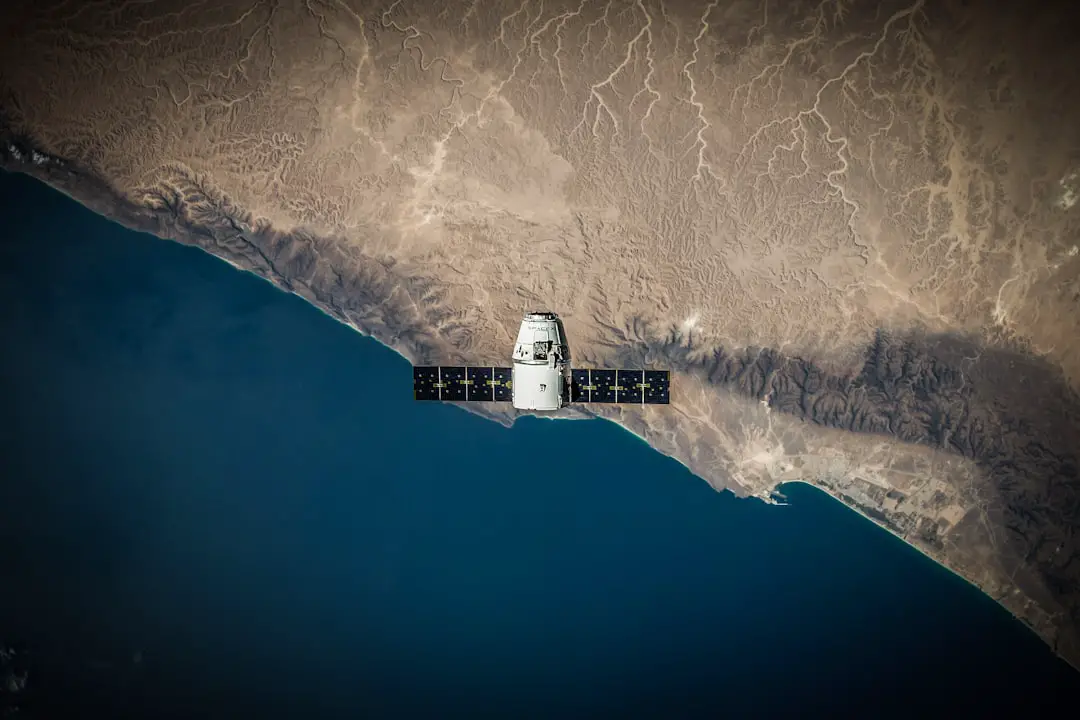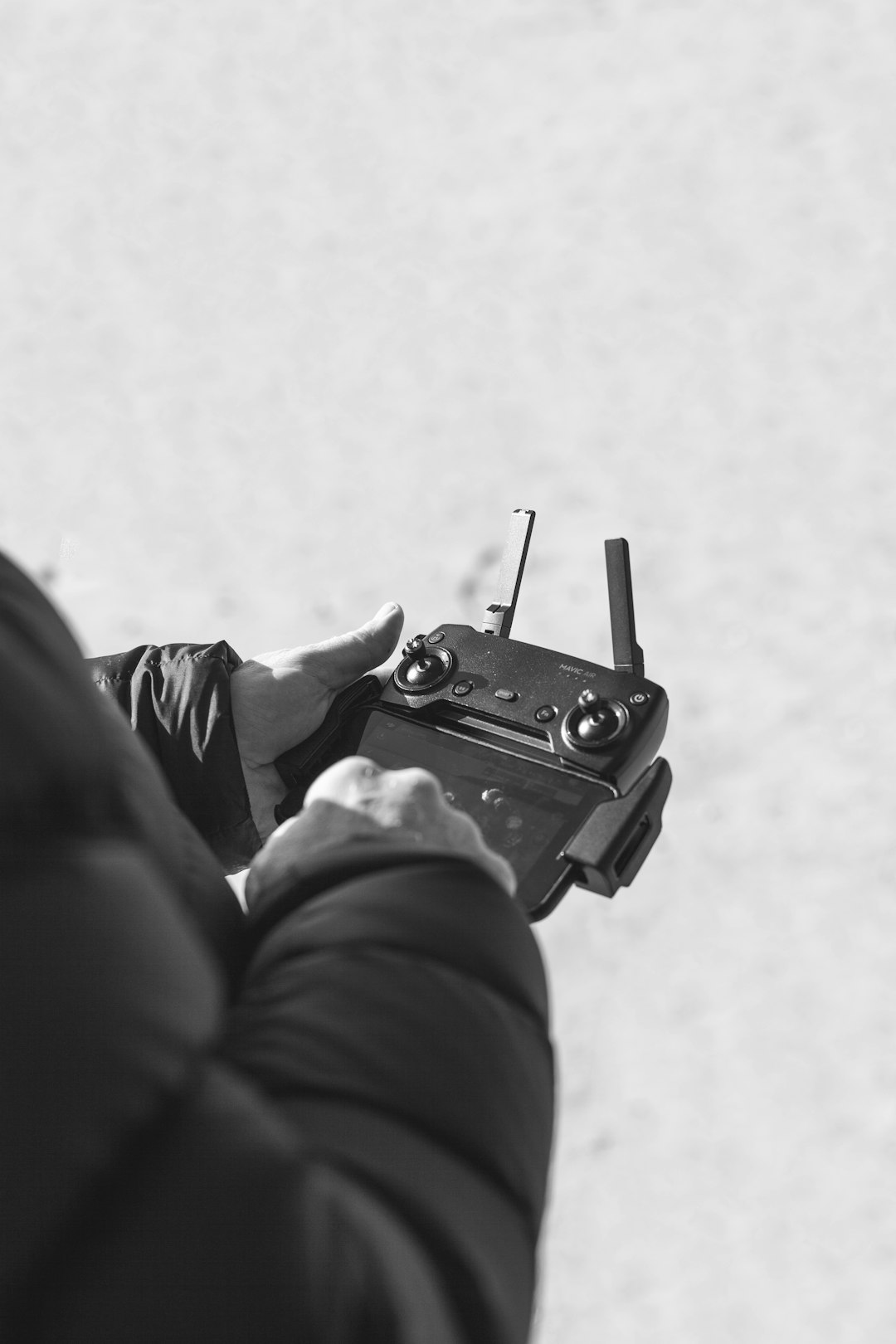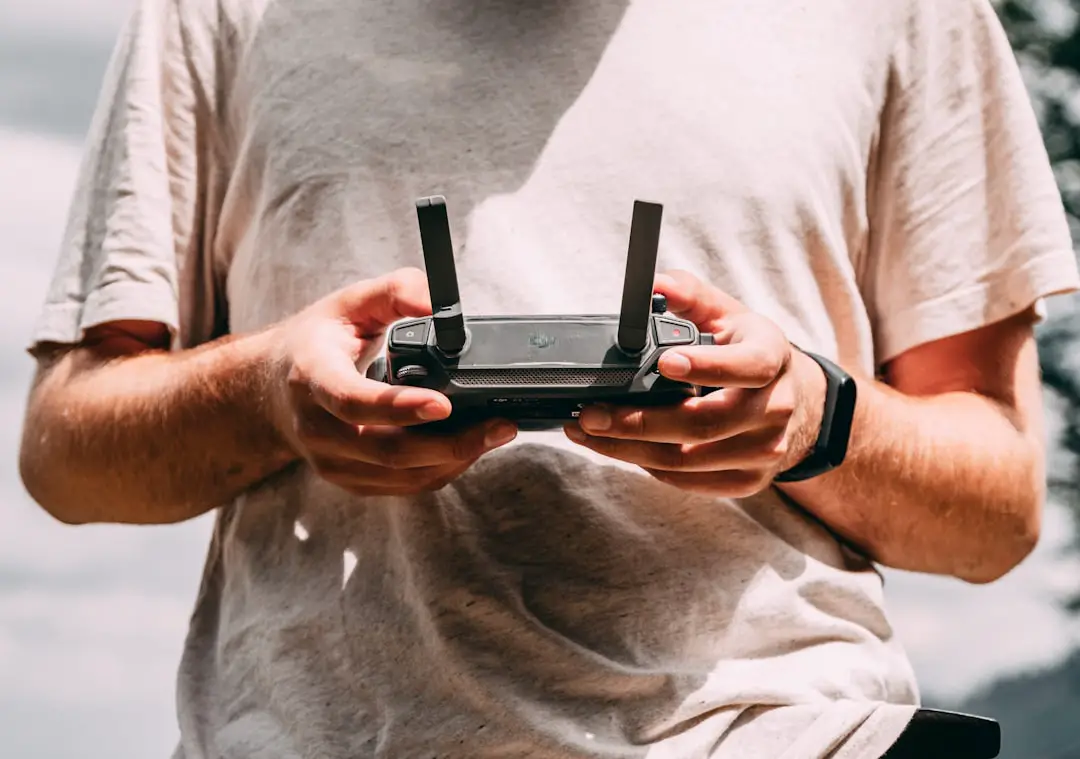Support our educational content for free when you purchase through links on our site. Learn more
FAA Drone Rules for Hobbyists: 10 Essential Guidelines You Must Know! 🚁

Are you ready to take your drone flying to new heights? Whether you’re capturing breathtaking landscapes or racing through the skies, understanding the FAA drone rules for hobbyists is crucial for a safe and enjoyable experience. Did you know that nearly 1.7 million drones were registered in the U.S. as of 2023? With so many enthusiasts in the air, it’s more important than ever to know the regulations that keep our skies safe.
In this comprehensive guide, we’ll break down the essential rules you need to follow as a recreational drone pilot. From registration requirements to airspace classifications, we’ve got you covered. Plus, we’ll share tips on how to stay compliant and avoid the pitfalls that could lead to hefty fines or worse. So, buckle up and get ready to soar through the world of drone regulations!
Key Takeaways
- Register Your Drone: If it weighs over 0.55 lbs, registration with the FAA is mandatory.
- Take The TRUST Test: Passing the Recreational UAS Safety Test is a requirement for hobbyists.
- Fly Within Visual Line-of-Sight: Always keep your drone in sight while flying.
- Know Your Airspace: Familiarize yourself with airspace classifications and restrictions.
- Safety First: Avoid flying over people and always yield to manned aircraft.
Ready to find the perfect drone for your adventures? 👉 Shop DJI Mini 2 on: Amazon | Walmart | DJI Official Website and 👉 Shop DJI Mavic Air 2 on: Amazon | Walmart | DJI Official Website. Happy flying! 🚀
Table of Contents
Quick Tips and Facts
Understanding the FAA Drone Regulations for Hobbyists
What is Considered Recreational Use of Drones?
Essential Rules for Recreational Drone Operators
Safety Guidelines to Follow While Flying Drones
Where Can You Fly Your Drone?
Registration Requirements for Hobbyist Drones
Understanding Airspace Classifications
What Happens If You Break the Rules?
Tips for Staying Compliant with FAA Regulations
The Importance of Keeping Up with Regulatory Changes
Common Myths About FAA Drone Rules for Hobbyists
Conclusion
Recommended Links
FAQ
Reference Links
Quick Tips and Facts (#quick-tips-and-facts)
- Register your drone: If it weighs over 0.55 lbs (250g), it needs to be registered with the FAA (Federal Aviation Administration). This is a super important first step!
- Take The Recreational UAS Safety Test (TRUST): It’s free, online, and you’ll get a certificate. Keep it handy when you fly! (TRUST).
- Fly within visual line-of-sight: Don’t let your drone become a speck in the distance.
- Respect airspace: Stay below 400 feet and away from airports (Where can you legally fly a drone in the US?). Use the B4UFLY app to help with this.
- Give way to manned aircraft: They always have the right of way. No exceptions!
- Don’t fly over people: Safety first! Keep your drone away from crowds and moving vehicles.
- Be aware of local laws: Some parks and areas have their own drone rules. Do your research!
Understanding the FAA Drone Regulations for Hobbyists (#understanding-the-faa-drone-regulations-for-hobbyists)
So, you’ve caught the drone bug? Welcome to the club! At Drone Brands™, we’re passionate about safe and exciting drone adventures. But before you take to the skies, it’s crucial to understand the rules. The FAA has established specific regulations for hobbyist drone pilots to ensure everyone’s safety. Think of these rules not as restrictions, but as guidelines for a fun, responsible flying experience. Ignorance is not bliss when it comes to drone laws! You can find more information on our Drone Laws and Regulations category page.
Why are FAA Drone Regulations Important for Hobbyists?
Imagine a world without traffic lights – chaos, right? Similarly, FAA regulations bring order to the airspace. They prevent collisions, protect people and property, and ensure that everyone can enjoy the wonders of drone flight. These rules aren’t just about avoiding fines; they’re about fostering a safe and responsible drone community.
Key Areas Covered by FAA Drone Regulations
The FAA regulations cover a wide range of aspects, including drone registration, airspace restrictions, operating limitations, and safety guidelines. We’ll dive deep into each of these areas in the following sections. Stay tuned!
What is Considered Recreational Use of Drones? (#what-is-considered-recreational-use-of-drones)
This is where things get a little tricky. The FAA defines recreational drone use as flying for personal enjoyment, hobbies, or fun. Think stunning aerial photography of your latest hike, capturing family moments from a unique perspective, or simply the thrill of piloting a drone. However, the moment you receive any form of compensation for your drone flight – even a small gift – it crosses the line into commercial use, which falls under different regulations (Part 107). Check out our Drone Business Opportunities category page for more info on commercial drone operations.
Examples of Recreational Drone Use
- ✅ Flying for fun in your backyard.
- ✅ Taking aerial photos of your vacation.
- ✅ Participating in a drone racing competition (as long as you’re not getting paid).
Examples of Non-Recreational Drone Use
- ❌ Taking photos of real estate for a client.
- ❌ Inspecting a roof for insurance purposes.
- ❌ Delivering packages (even if it’s just for a friend).
Essential Rules for Recreational Drone Operators (#essential-rules-for-recreational-drone-operators)
Ready to take off? Here are the essential rules you must follow as a recreational drone operator:
- Register your drone: If it weighs over 0.55 lbs, head over to the FAA DroneZone to register it. It’s a simple process and doesn’t cost much.
- Pass the TRUST test: The Recreational UAS Safety Test (TRUST) is a free online test that covers basic drone safety and regulations. Once you pass, keep your certificate with you whenever you fly. You can find more information on our Beginner Drones category page.
- Fly within visual line-of-sight (VLOS): Always keep your drone within sight. No peeking through binoculars or relying on FPV goggles without a visual observer.
- Respect airspace restrictions: Stay below 400 feet, avoid flying near airports or other restricted areas, and always check the B4UFLY app before you fly.
- Give way to manned aircraft: If you see a plane or helicopter, land your drone immediately and wait for it to pass.
- Don’t fly over people or moving vehicles: Safety first! Keep your drone away from crowds and busy roads.
- Don’t fly under the influence: Just like driving a car, operating a drone under the influence of drugs or alcohol is illegal and dangerous.
- Be aware of local laws: Check for any local ordinances or park rules regarding drone use.
Safety Guidelines to Follow While Flying Drones (#safety-guidelines-to-follow-while-flying-drones)
At Drone Brands™, we’re all about safe and exhilarating drone adventures. Here are some extra safety tips to keep in mind:
- Pre-flight checklist: Before each flight, inspect your drone for any damage, ensure the battery is fully charged, and calibrate the compass.
- Weather check: Avoid flying in strong winds, rain, or fog. Check the weather forecast before heading out.
- Emergency plan: Have a plan in case something goes wrong. Know how to activate the drone’s return-to-home feature and have a backup plan for landing.
- Maintenance: Regularly maintain your drone according to the manufacturer’s instructions. This will help prevent malfunctions and ensure safe flights.
- Continued learning: Stay up-to-date with the latest FAA regulations and best practices. The drone world is constantly evolving, so continuous learning is essential. Check out our Drone Industry News category page for the latest updates.
Where Can You Fly Your Drone? (#where-can-you-fly-your-drone)
Knowing where you can fly your drone is just as important as knowing how to fly it. Here’s a breakdown of airspace classifications and where recreational drone flights are generally permitted:
Class G Airspace:
This is uncontrolled airspace, typically found in rural areas. Recreational drone flights are generally permitted in Class G airspace, provided you stay below 400 feet and follow all other FAA regulations.
Class B, C, D, and E Airspace:
This is controlled airspace, usually surrounding airports. You’ll need to obtain authorization through LAANC (Low Altitude Authorization and Notification Capability) or the FAA DroneZone before flying in these areas. The B4UFLY app can help you determine the airspace classification for your location. Remember, safety is paramount when flying near airports.
Restricted Areas:
Some areas, such as national parks, military bases, and critical infrastructure, are completely off-limits to drones. Always check the B4UFLY app and local regulations before flying in a new area. Don’t take any chances!
Registration Requirements for Hobbyist Drones (#registration-requirements-for-hobbyist-drones)
If your drone weighs more than 0.55 lbs (250g), you must register it with the FAA before flying recreationally. The registration process is straightforward and can be completed online through the FAA DroneZone. You’ll need to provide some basic information about yourself and your drone, and there’s a small registration fee. Once registered, you’ll receive a registration number that you must display on your drone. Think of it as your drone’s license plate!
Who Needs to Register?
Anyone flying a drone recreationally that weighs over 0.55 lbs. Even if you’re just flying in your backyard, registration is required. It’s a small price to pay for the safety and organization of the airspace.
What Information Do I Need to Register?
You’ll need your drone’s make and model, your contact information, and a credit card to pay the registration fee. The process is quick and easy, so don’t put it off!
Understanding Airspace Classifications (#understanding-airspace-classifications)
Airspace is classified into different categories based on the level of air traffic control. As a drone pilot, it’s crucial to understand these classifications and the restrictions that apply to each. The B4UFLY app is your best friend here! It provides real-time information about airspace restrictions and can help you plan your flights safely.
Class G Airspace: Uncontrolled Airspace
This is typically the friendliest airspace for recreational drone pilots. You generally don’t need prior authorization to fly in Class G airspace, as long as you stay below 400 feet and follow all other FAA regulations. However, always double-check the B4UFLY app for any temporary restrictions.
Class B, C, D, and E Airspace: Controlled Airspace
These airspace classifications are usually found around airports and require more caution. You’ll need to obtain authorization through LAANC or the FAA DroneZone before flying in these areas. The B4UFLY app can guide you through this process. Remember, safety is paramount when flying near airports.
What Happens If You Break the Rules? (#what-happens-if-you-break-the-rules)
Breaking FAA drone regulations can have serious consequences, ranging from hefty fines to criminal penalties. The FAA takes these rules seriously, and so should you. It’s not just about avoiding punishment; it’s about maintaining the safety and integrity of the airspace for everyone.
Potential Penalties for Violating FAA Drone Regulations
The penalties for violating FAA drone regulations can vary depending on the severity of the infraction. They can include:
- Warning letters: For minor offenses.
- Fines: These can range from hundreds to thousands of dollars.
- Certificate suspension or revocation: For more serious violations.
- Criminal penalties: In extreme cases, such as endangering an aircraft.
Tips for Staying Compliant with FAA Regulations (#tips-for-staying-compliant-with-faa-regulations)
Staying compliant with FAA drone regulations is easier than you think. Here are some tips to keep you on the right side of the law:
- Stay informed: Regularly check the FAA website for updates to the regulations. The drone world is constantly evolving, so staying informed is essential.
- Use the B4UFLY app: This app is your best friend for checking airspace restrictions and planning safe flights.
- Join a community: Connect with other drone pilots through online forums or local clubs. Sharing knowledge and experiences is a great way to stay up-to-date and compliant. Check out our Drone Brand Guides category page for more information on different drone brands and models.
- Ask questions: If you’re unsure about any aspect of the regulations, don’t hesitate to contact the FAA or a knowledgeable drone pilot.
The Importance of Keeping Up with Regulatory Changes (#the-importance-of-keeping-up-with-regulatory-changes)
The world of drones is constantly evolving, and so are the regulations that govern them. Staying up-to-date with these changes is crucial for every drone pilot, whether you’re a seasoned pro or just starting out. The FAA regularly updates its rules and guidelines to address emerging safety concerns and technological advancements. By staying informed, you can ensure that your flights are always safe, legal, and enjoyable. Check out our Drone Laws and Regulations category page for the latest updates.
How to Stay Updated on FAA Drone Regulations
- Subscribe to FAA updates: Sign up for email alerts or follow the FAA on social media to receive notifications about regulatory changes.
- Follow drone news: Stay informed about industry trends and regulatory developments by reading drone-related blogs, websites, and publications.
- Join a drone organization: Many drone organizations provide valuable resources and updates on FAA regulations to their members.
Common Myths About FAA Drone Rules for Hobbyists (#common-myths-about-faa-drone-rules-for-hobbyists)
Let’s debunk some common myths about FAA drone rules for hobbyists:
- Myth 1: I don’t need to register my drone if it’s small. False! If your drone weighs over 0.55 lbs (250g), it must be registered, regardless of its size.
- Myth 2: I can fly my drone anywhere I want. False! Airspace restrictions apply to all drone pilots, including hobbyists. Always check the B4UFLY app before you fly.
- Myth 3: FAA regulations don’t apply to me if I’m just flying for fun. False! FAA regulations apply to all recreational drone pilots. Ignorance of the law is no excuse.
- Myth 4: I don’t need to take the TRUST test if I’ve already taken a different drone certification. False! The TRUST test is specifically designed for recreational drone pilots and is required by the FAA.
Conclusion (#conclusion)

In summary, understanding and adhering to the FAA drone rules for hobbyists is essential for ensuring a safe and enjoyable flying experience. We’ve covered everything from registration requirements to airspace classifications, and safety guidelines. Remember, these regulations are in place not just to keep you out of trouble, but to protect everyone sharing the skies.
If you’re looking for a reliable drone to start your aerial adventures, consider brands like DJI, known for their user-friendly models like the DJI Mini 2 and DJI Mavic Air 2. These drones are perfect for hobbyists, offering excellent camera quality and flight stability. However, remember that while they are fantastic for recreational use, they also require adherence to the FAA regulations we’ve discussed.
Key Positives:
- User-friendly design: Great for beginners.
- High-quality camera: Perfect for capturing stunning aerial shots.
- Stable flight performance: Ensures a smooth flying experience.
Key Negatives:
- Pricey for some models: Higher-end drones can be a bit of an investment.
- Learning curve: While user-friendly, there’s still a learning curve for new pilots.
Overall, we confidently recommend investing in a drone that fits your needs while ensuring compliance with FAA regulations. Happy flying! 🚀
Recommended Links (#recommended-links)
- 👉 Shop DJI Mini 2 on: Amazon | Walmart | DJI Official Website
- 👉 Shop DJI Mavic Air 2 on: Amazon | Walmart | DJI Official Website
- Books on Drone Regulations: FAA Regulations for Drones | The Complete Guide to Drones
FAQ (#faq)

What are the specific regulations for flying drones recreationally under FAA rules? (#what-are-the-specific-regulations-for-flying-drones-recreationally-under-faa-rules)
The FAA has established several regulations for recreational drone flying, including:
- Registration: Drones over 0.55 lbs must be registered.
- TRUST Test: Pilots must pass The Recreational UAS Safety Test and carry proof of passage.
- Visual Line-of-Sight: Drones must be flown within the pilot’s visual line of sight.
- Altitude Limit: Drones should not exceed 400 feet in altitude.
- No Flying Over People: Avoid flying over unprotected individuals or moving vehicles.
- Airspace Awareness: Pilots must be aware of airspace restrictions and avoid controlled airspace without authorization.
Do I need to register my drone with the FAA as a hobbyist, and if so, how do I do it? (#do-i-need-to-register-my-drone-with-the-faa-as-a-hobbyist-and-if-so-how-do-i-do-it)
Yes, if your drone weighs more than 0.55 lbs (250g), you must register it with the FAA. To do this:
- Visit the FAA DroneZone.
- Create an account or log in.
- Provide required information about yourself and your drone.
- Pay the registration fee.
- Display the registration number on your drone.
What are the altitude and airspace restrictions for hobbyist drone flights according to the FAA? (#what-are-the-altitude-and-airspace-restrictions-for-hobbyist-drone-flights-according-to-the-faa)
Hobbyist drone pilots must adhere to the following altitude and airspace restrictions:
- Altitude: Drones must be flown at or below 400 feet.
- Airspace: Recreational pilots can fly in Class G (uncontrolled) airspace without prior authorization. For Class B, C, D, and E (controlled) airspace, authorization is required via LAANC or the FAA DroneZone.
Can I fly my drone at night as a hobbyist under FAA regulations, and what requirements must I meet to do so? (#can-i-fly-my-drone-at-night-as-a-hobbyist-under-faa-regulations-and-what-requirements-must-i-meet-to-do-so)
Yes, you can fly your drone at night as a hobbyist, but you must meet specific requirements:
- Anti-collision lights: Your drone must be equipped with lights that can be seen for at least 3 statute miles.
- Visual Line-of-Sight: You must maintain visual line-of-sight with your drone at all times.
- Familiarity with the area: It’s essential to know the flying area well, as flying at night can present additional challenges.
